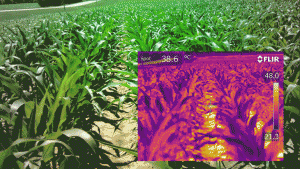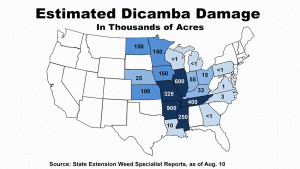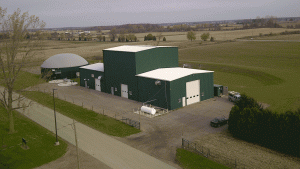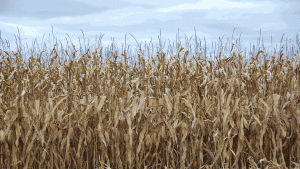Understanding precision agriculture
DATA NETWORKS

COLLECTING AND UTILIZING data and imagery from their fields is standard practice for precision farmers when managing their fields. But what more could these farmers do if they had access to a massive network that gathered data from hundreds — or thousands — of farms across the province and country?
Where previous stories in our “Understanding Precision Agriculture” series explained the importance of data collection, this story will explore how big data networks could potentially be used to help farmers make even more effective, profitable, and environmentally sustainable management decisions.
The big question right now is what would a big data-sharing network look like for Ontario farmers. Though there isn’t any formal infrastructure in place yet, several groups, including researchers, policymakers, and service providers, have ideas of what they would like to see and are working through several roadblocks and challenges.
Dr. Nicolas Tremblay, a crop and nutrient management researcher with Agriculture and Agri-Food Canada (AAFC) and president of the International Society of Precision Agriculture, says one of the biggest pieces of the data-sharing puzzle involves getting access to farmer data.
“Farmer data is easily the most important data for us to have access to. Right now, we as researchers have access to a lot of data from satellite imagery, historical climate information, and soil sensors — but not the data directly from the farm itself,” he says.
This is a big gap, given that agriculture is a living, breathing, and ever-changing system, explains Tremblay. After all, hybrids and climate conditions change from season to season and soil conditions can vary from one field to another. Farmer data holds the key to understanding the whole agricultural system and why farmers succeed with their management decisions and why they sometimes fail.
“Even if we’re looking at data from individual farms, it’s too small of a sample,” he says. “But when you have the chance to put together hundreds or even thousands of farmers’ data, then we can start seeing larger trends and better understand the conditions that lead to success.”
ACCURACY
Nicole Rabe, land resource specialist with the Ontario Ministry of Agriculture, Food and Rural Affairs (OMAFRA), is part of an applied research team that is working with two-dozen farmer-cooperators across the province as part of the Precision Agriculture Advancement for Ontario project.
Over three seasons, the applied research team has worked with their cooperators to conduct field-scale trials with automated nitrogen rate and seed population prescriptions that have small check strips or blocks placed within a management zone.
Rabe says that one of the biggest issues the research team deals with is gathering accurate data when faced with high variability both in farmers’ fields, and in the types of precision equipment being used.
The researchers are currently using check strips and blocks to help them better understand the variability a farmer would see across each of their management zones within a field. However, Rabe believes that this is also an area where data sharing networks could help overcome some of the issues caused by high variability from farm to farm.
“We could eventually start to see farmer networks growing out of small-plot research,” she says. “And as researchers, the efficiency of doing work — such as nitrogen and seeding rate trials — goes up 100-fold because you can look at aggregated farm data from the start and draw out certain trends.”
If a researcher were to look at nitrogen responses in corn, for example, they could start by looking at data sets collected from across multiple geographies, landscapes, and soils in Ontario, Canada, and even North America.
Dr. Karen Hand, a biostatistician and director of Ontario Precision Agri-Food (OPAF), says her idea of an effective big data-sharing network is one that lets researchers, government, and farmers respond to agronomic challenges, food safety issues, and risks in real-time.
But what’s missing right now is the infrastructure. She says the first big step in creating a data sharing system that works is to start figuring out what kinds of data is needed, how and where it will be used, as well as the standards to follow for making data available.
“I think we as an ag industry have a vision of where we want to go with data sharing, and we certainly have the expertise but this infrastructure needs to be built in a way that addresses everyone’s needs — starting with farmers,” says Hand. “For this to work, there needs to be value for everyone giving data into this system.”
One of the major barriers Hand sees isn’t so much creating the actual data sharing infrastructure itself, but in building trusting relationships — especially when it comes to overcoming farmers’ concerns around making their data publicly available.
As part of OPAF, Hand has been working with the Ag Data Transparency Initiative in the United States to adapt their standards for protecting farmers’ privacy and helping them understand how exactly their data will be used.
“Farmers get a bit data-shy when their data is collected and used in ways that they’re not aware of or that they didn’t sign up for,” she says. “We need to work at creating a transparent environment that not only respects a farmers’ privacy and data ownership rights, but allows for collaboration.”
When it comes to building the data sharing infrastructure, Hand says they need to strike a careful balance between respecting a farmers’ privacy and data ownership rights, and allowing for open collaboration so their data can be used in a smooth, seamless way.
“We would see ourselves as stewards, not owners of data, there’s no vested interest in us holding the data, or trying to profit from it,” says Hand. “What we really want is innovation, the ability to respond to risks, and address agricultural challenges now and in the future.”
As for who will be the ones to build out the IT structure for these big data-sharing networks, Hand believes the answer lies with an up-and-coming generation of computer-savvy youth with farming backgrounds.
“Ultimately, we need innovators. So how do we harness their skills and abilities and bring them back to agriculture,” she says. “We need to provide them an environment and a way to innovate with the skills they have, because they have the potential to help us take farming to a whole new level.”
For more information about Ontario Precision Agri-Food, visit: www.opaf.ca.
This project was funded in part through Growing Forward 2 (GF2), a federal-provincial-territorial initiative. The Agricultural Adaptation Council assists in the delivery of GF2 in Ontario.
Precision Agriculture Advancement for Ontario: This article is part of a series dedicated to helping farmers understand and implement precision agriculture technology. It is based on research conducted by Nicole Rabe, Ian McDonald, and Ben Rosser at OMAFRA, in conjunction with Mike Duncan, Sarah Lepp, and Gregor MacLean at Niagara College.
For more on precision agriculture go to: www.gfo.ca/ Research/Understanding-Precision-Ag. •











